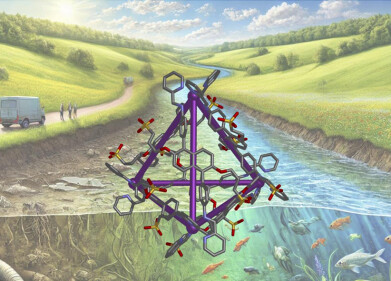-
 Scott Millholland, recipient of the coveted William D. Hatfield Award for Wastewater Operator of the Year.
Scott Millholland, recipient of the coveted William D. Hatfield Award for Wastewater Operator of the Year. -
 The team at Gardner; Left to right Dale Rittinghouse Matt Solorio David Birzer Eric Westerfield and Scott Millholland.
The team at Gardner; Left to right Dale Rittinghouse Matt Solorio David Birzer Eric Westerfield and Scott Millholland.
Wastewater treatment
Evergreen Landia mixers all part of Gardner’s high standards
Dec 14 2023
Some might consider the relentless maintenance regime at a treatment plant in Kansas to be almost too pro-active. But the longevity and reliability of this site’s equipment speaks volumes for the way this wastewater facility is run; not to mention the multiple awards it has won.
At Gardner, just south west of Kansas City, Site Superintendent Scott Millholland is a firm believer in keeping the Kill Creek Water Resource Plant clean, fully serviced and at optimum efficiency – at all times. Protecting the environment, waterways and his team are paramount.
Scott recently completed 25 years’ service (the past 12 as Site Superintendent), seeing in the Kill Creek facility when it was built in 2002 by Kruger as a Bio-Denitro-phased oxidation ditch technology plant. Also there since the plant first opened are two mixers made by Landia, which help keep everything in suspension in the ‘racetrack’ nitrification/denitrification set-up.
“These Landia mixers continue to keep everything moving and do a very good job for us,” said Scott. “We pull them up every Spring and Fall to pull off any rags and make sure there’s nothing on the magnetic plug rings – and after checking them over, put them right back into service. They’re an integral part of what we do here.”
In the corrosive world of wastewater treatment that Scott knows very well, his view on all that pro-active maintenance is partly summed up with the statement that ‘oil is cheap!
“We didn’t have to carry out any type of rebuild on the first Landia mixer until it had completed 14 years of service,” he said.
“We look after them properly, but they’re a strong, solid design and very easy to maintain. Equipment should always be maintained properly, but clearly, the mixers made by Landia are truly built to last. After our rotors have been on for an hour and a half, we run the mixers for 45 minutes. At just 13 amps, they are super-low on energy usage, especially when compared to blowers. We’ve just replaced 130-amp (125HP) blowers with new units that are just 50 amps, so it has been a very quick payback.”
Keeping 21-year-old mixers in tip-top condition is just one of the many reasons that Gardner has rightly been recognised as an outstanding wastewater treatment facility. Each of the 23 lift stations in and around Gardner are also checked every day to ensure that all of the wastewater is getting through properly. Serving a population that has leapt from 6,900 people (in 1998) to a figure approaching 25,000 today, Kill Creek has won the Kansas Water Environment Association (KWEA) Wastewater Treatment Plant of the year seven times, and in 2020, Scott Millholland received the William D. Hatfield Award for Wastewater Operator of the Year. The coveted title honors operators who have contributed positively to preserving and enhancing the water environment through their leadership, example, enthusiasm and hard work.Scott not only oversees the entire facility, leading and mentoring his team, but also still works as an operator and mechanic/engineer.
“Building a better community today for future generations really inspires me,” added Scott, “and our team takes great pride in protecting the local environment and waterways. We haven’t had a permit violation for over two decades. The plant here was originally designed to serve a population of 25,000 with a processing capacity of 2.5 mgd. We’re currently running at about 2.3 mgd, with room to expand (because it is modularised) to 7.5 mgdwithout disrupting operations. Gardner is one of the fastest growing cities in the US; very much on the up with new jobs and an expanding economy, so it is very important that we keep at least one step ahead with our operations. We try to save money wherever we can, but never compromise on treatment quality.”
In addition to significant population growth, Kill Creek Water Resource Plant is also having to meet the new task of reducing phosphorous and nitrogen outputs to meet ever stricter discharge permits.
“We’ve made some operational process adjustments to tackle this,” said Scott, “and will continue to keep on top of it. “Gardner has come a long way on its journey from lagoons, fixed film plant with trickling filter, rotating biological contactor, chlorine, package plant – and then full treatment plant. We used to do pretty much everything on an on-call basis, from checking the water and wastewater plants, water breaks, turning meters on and off, and anything and everything else that needed to be done. For new challenges such as reducing phosphorous and nitrogen, all of our equipment, no matter how new or old, including the mixers from Landia, will play their part.”
Events
Jun 17 2025 Guangzhou, China
Singapore International Water Week Spotlight 2025
Jun 23 2025 Singapore
Jun 25 2025 Sao Paulo, Brasil
Jul 02 2025 Bangkok, Thailand
Jul 02 2025 Bangkok, Thailand



















